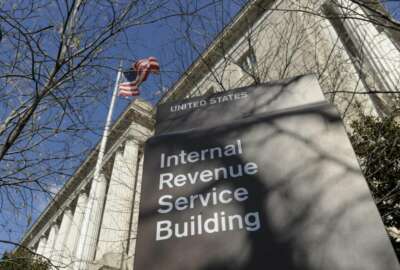IRS looks to automate how it processes paper tax returns to tackle its backlog
The IRS, in its request for information, is specifically looking for technology that “will perform a complete digital intake for all incoming mail,” includi...
The IRS, having struggled with a backlog of mail and paper tax returns since the start of the COVID-19 pandemic, is calling on industry to help tackle its paper problem.
The agency’s Enterprise Digitalization and Case Management Office (EDCMO) is asking vendors how it can digitize more than 100 million pieces of mail it receives every year.
The IRS, in its request for information, is specifically looking for technology that “will perform a complete digital intake for all incoming mail,” including envelopes and their contents.
“To ensure we continue to meet our demand and improve taxpayer service, we are seeking a new and inventive way to complete these tasks while maintaining our standards and timeframes,” the RFI states.
IRS Commissioner Chuck Rettig told the Senate Appropriation Committee’s subcommittee on financial services and general government that the agency is “going into the direction of being able to automate paper returns.”
“It would help from a staffing perspective. It would help from a cost perspective, and I think it would help across the board in terms of shortening the tail on when we can get these returns processed and get refunds out,” Rettig said.
The IRS, amid its long-term workforce and legacy IT challenges, has repeatedly singled out its paper workload as one of its biggest setbacks this filing season. National Taxpayer Advocate Erin Collins called out paper as the agency’s “kryptonite,” and directed the IRS to quickly implement scanning technology to process paper tax returns.
Rettig told the subcommittee that the agency, as of late April, has a backlog of 1.8 million unprocessed paper tax returns.
“There is not a system that allows the IRS to seamlessly, if you will, take the equivalent of a Xerox copier or fax that drops it into our system seamlessly and all the numbers drop in,” he said.
Rettig continued to ask Congress for multi-year funding to support its ongoing IT modernization efforts, adding that it is “impossible to build out a robust, meaningful input technology” without these types of funds.
Lawmakers, however, are reluctant to support these requests.
Subcommittee Ranking Member Sen. Cindy Hyde-Smith (R-Miss.) said the IRS received more than $3 billion in supplemental COVID-19 funding since 2020, and more than $1 billion remains available.
Rettig said the IRS has used supplemental pandemic funding to do “a lot of innovative things behind the scenes to make things work.”
“We’ve used our [American Rescue Plan Act] and other money for technology that radically improved our ability to process certain things than in a different world we probably wouldn’t have been able to do or have the support to do it,” he said.
Making IRS data available, accessible for decision making
Collins, in a recent Taxpayer Advocate Directive, directed the IRS to work with tax preparers to use a 2D barcode on paper tax returns. She said state tax agencies have been using scanning technology for years to automate the processing of paper tax returns.
Rettig said the IRS is looking at scanning technology, but is looking beyond just 2D barcodes. He said the IRS asked for funding to implement 2D barcodes in 2013, but never received the funding from Congress.
“If we were asking for it in 2013, we are 10 years essentially, technology-wise, beyond that,” Rettig said.
Rettig said scanning and digitization technology would help the agency reduce its backlog and improve efficiency, but probably wouldn’t result in workforce cost savings.
“There is not a perfect system that the IRS can buy today without a significant cost, both in terms of human cost and resources to get us where we need to be. But we are definitely going in that direction,” he said.
The IRS receives more than 100 million pieces of paper mail every year. That mail gets opened and sorted at the agency’s processing centers. The agency’s current mail sorting process does not involve digitization, but instead relies on manual sorting.
The IRS, in its RFI, said efforts will support improvements to taxpayer service, improve the fairness of tax enforcement and compliance and reduce teleworking challenges that emerged during the COVID-19 pandemic.
The IRS is asking vendors for a rough cost estimate for this technology, as well as an estimated return on investment. It’s also asking the industry if there are any infrastructure issues that will make this effort more difficult.
The agency is specifically asking whether scanned images can be uploaded both to the cloud, as well as an on-premises system.
The technology would have to be compliant with IRS systems and meet cybersecurity requirements. Potential IT solutions would need to be approved by the IRS chief information officer.
Beyond its plans for scanning technology, the RFI states the IRS “is creating an environment where IRS data is available, accessible, and usable in a format that enables data-driven decision making at all levels of the organization.”
The agency will accept responses to its RFI through 8 a.m. on May 13.
Copyright © 2024 Federal News Network. All rights reserved. This website is not intended for users located within the European Economic Area.
Jory Heckman is a reporter at Federal News Network covering U.S. Postal Service, IRS, big data and technology issues.
Follow @jheckmanWFED






